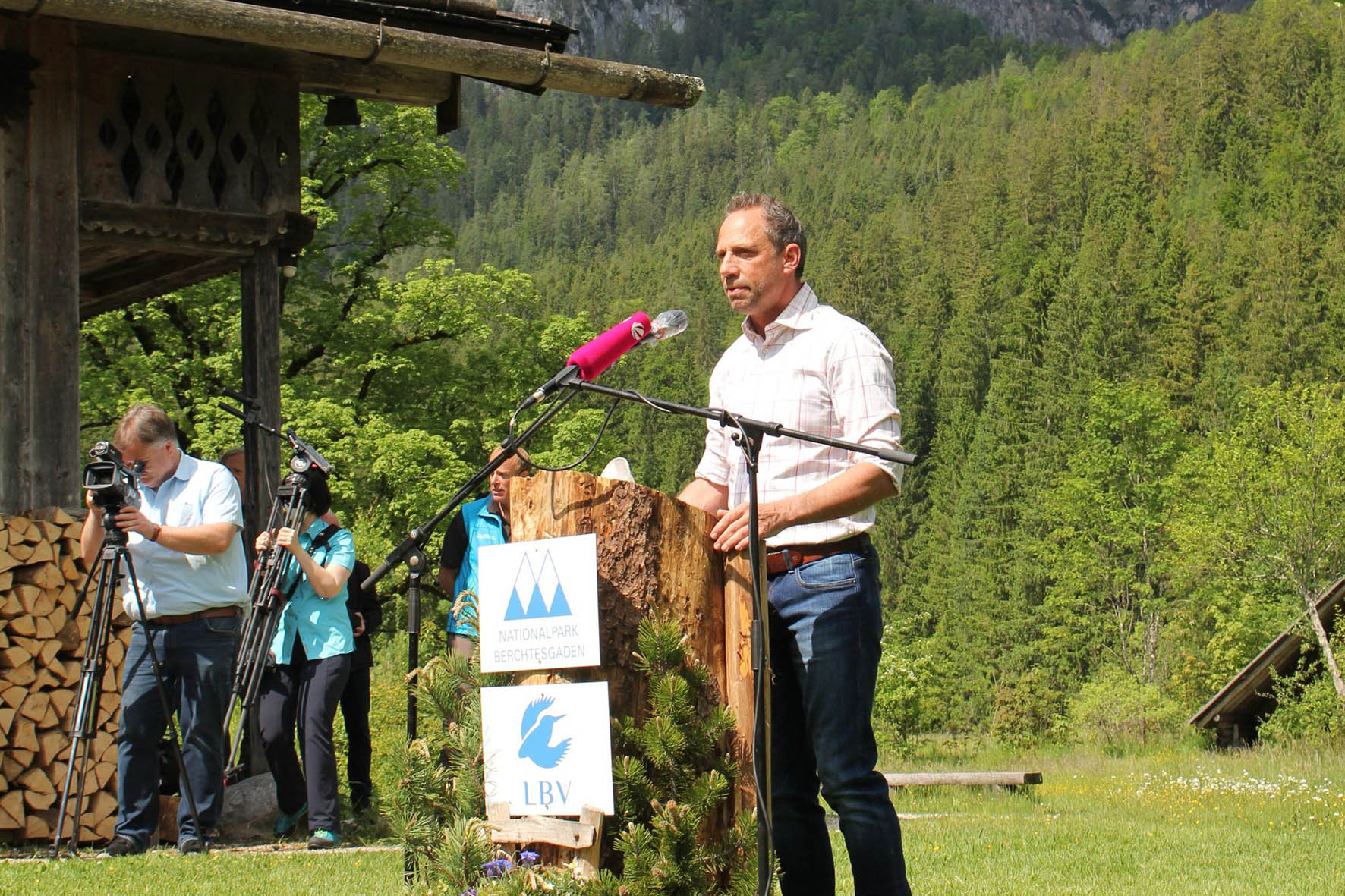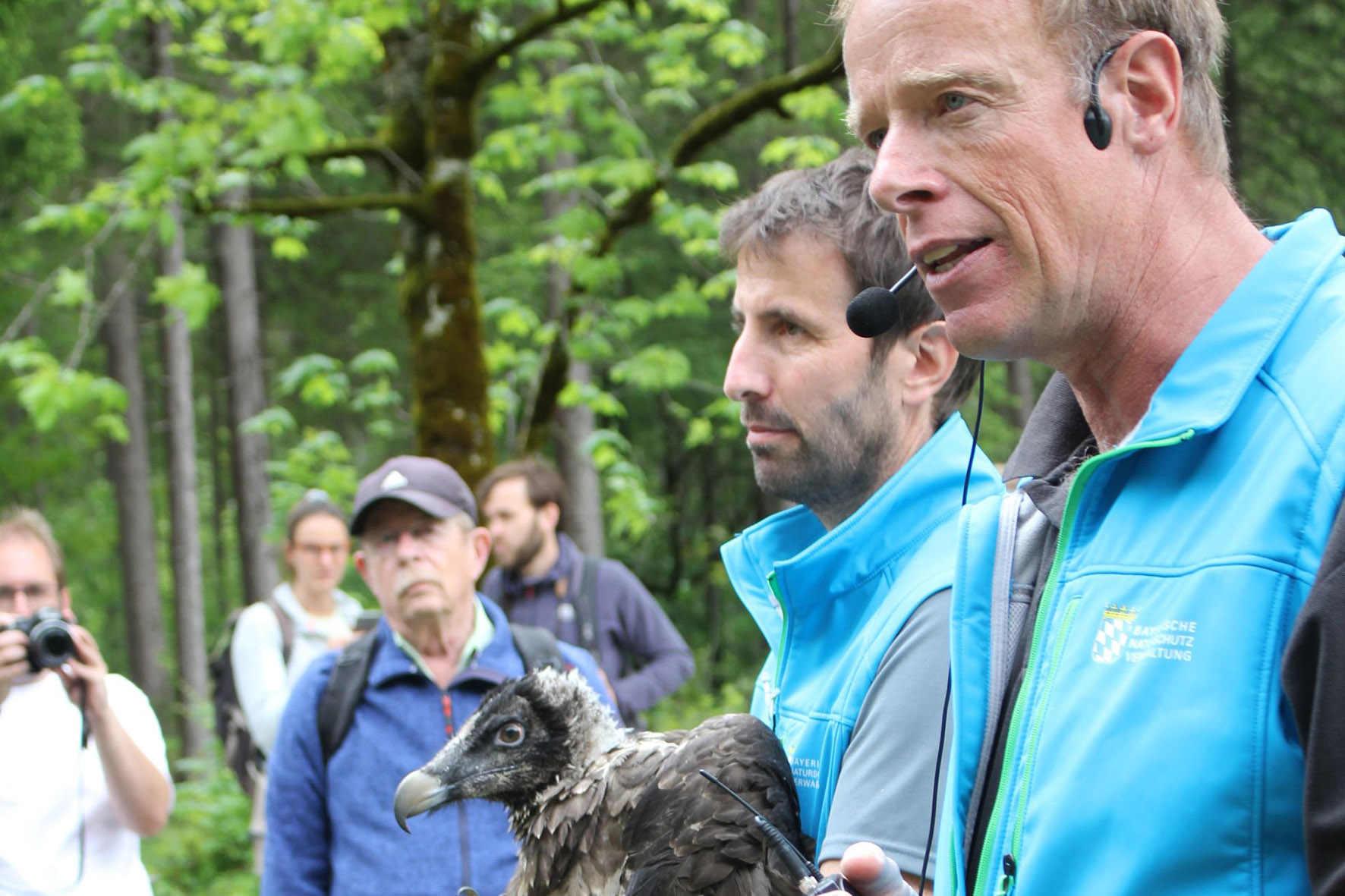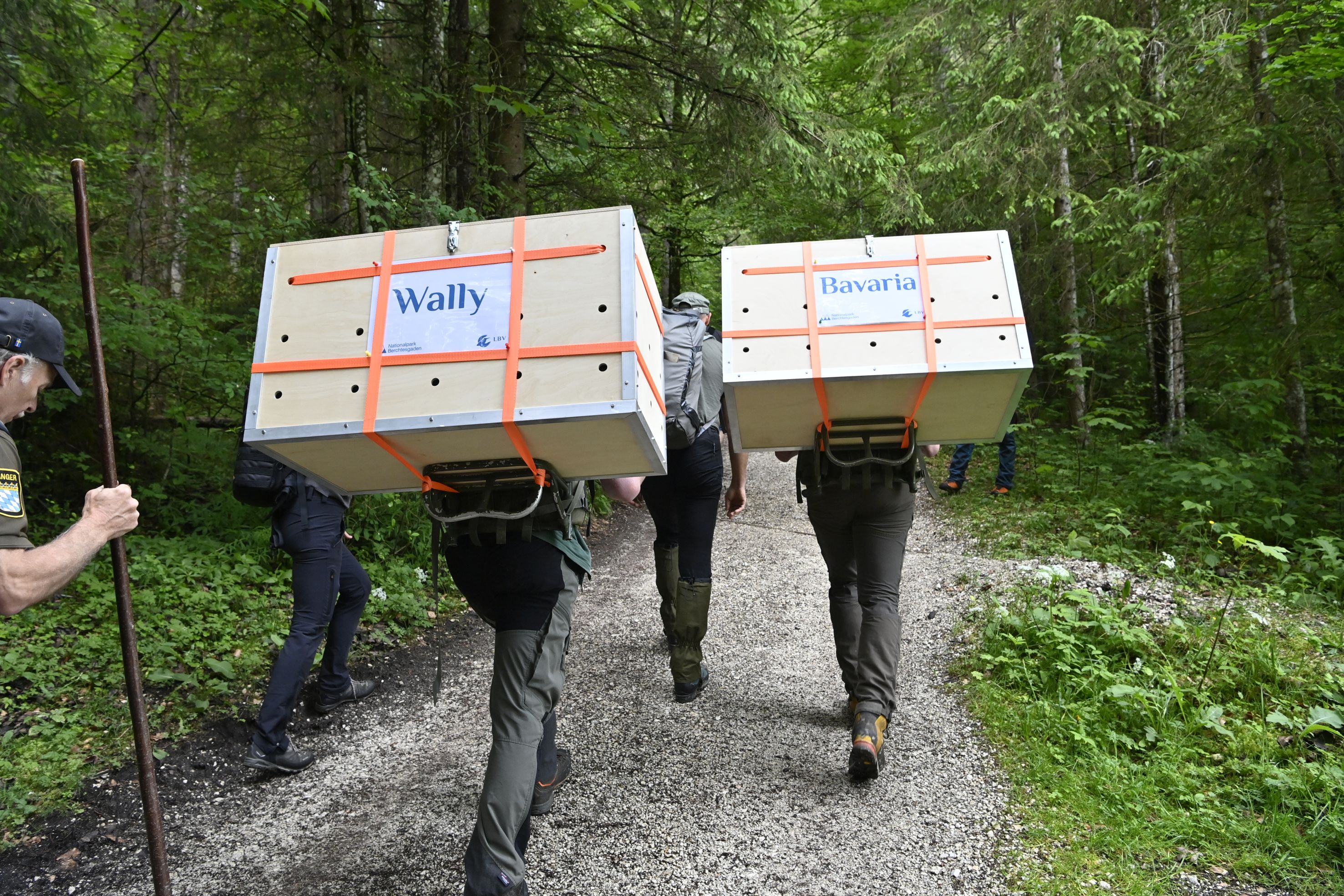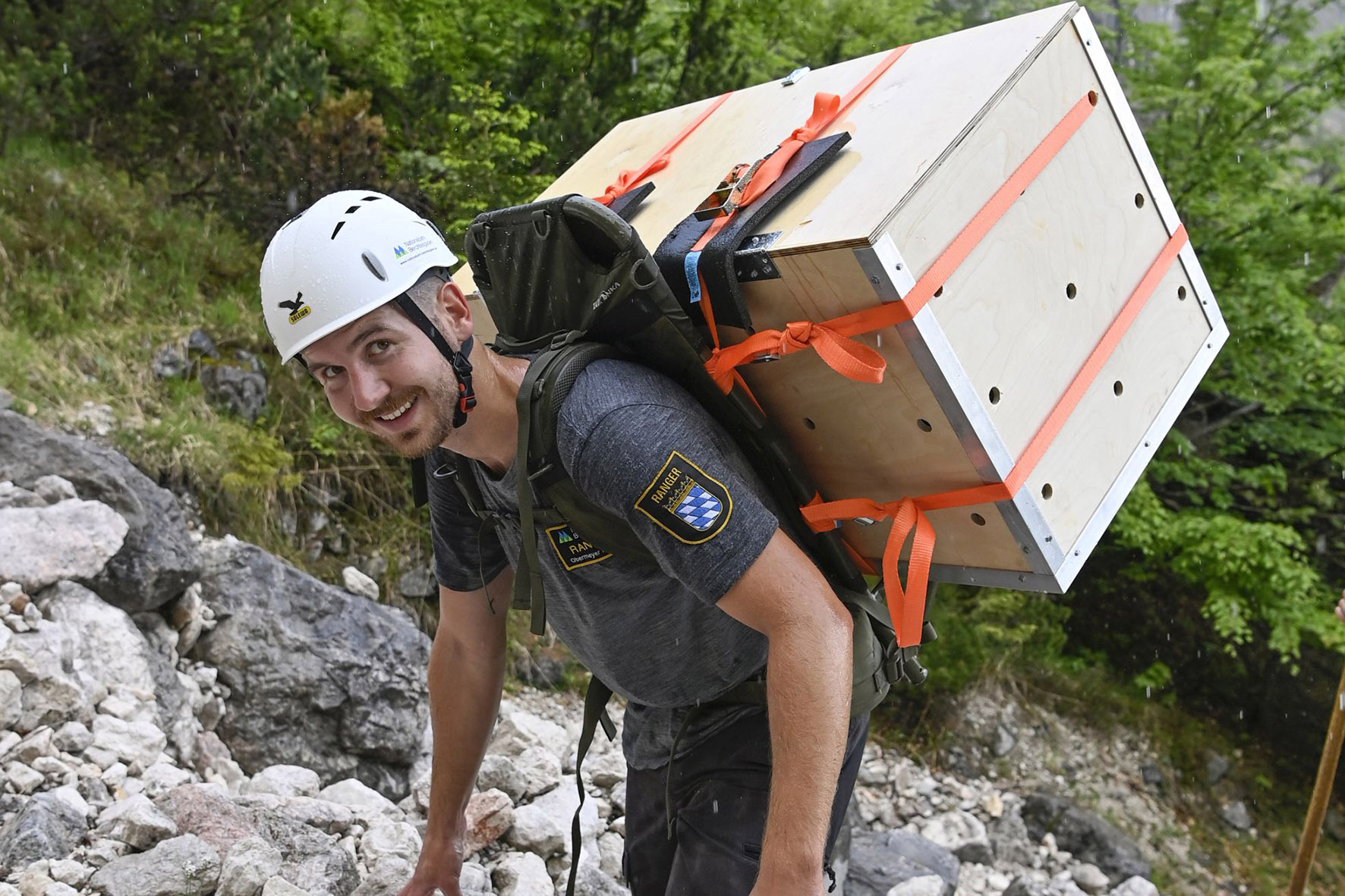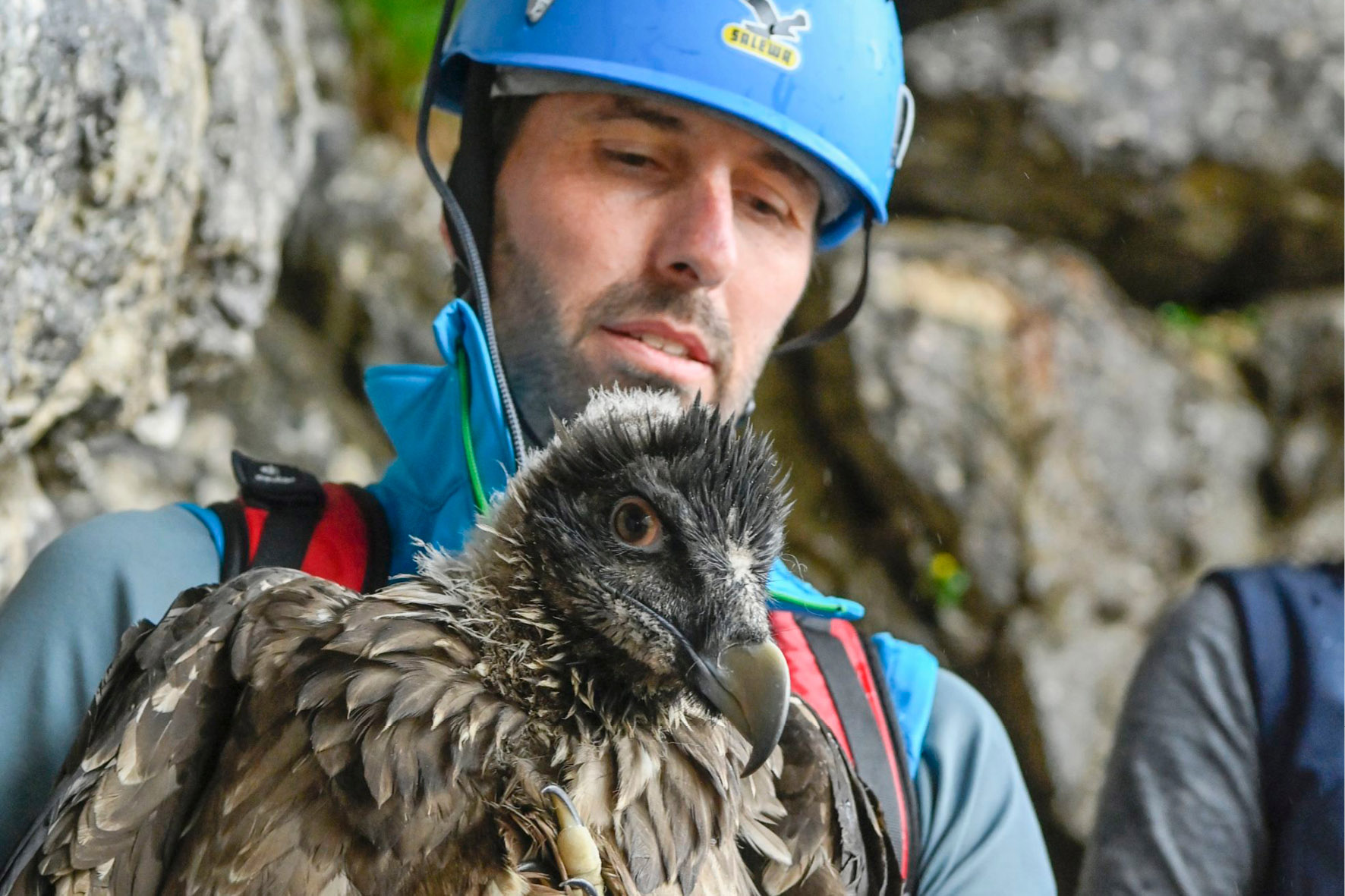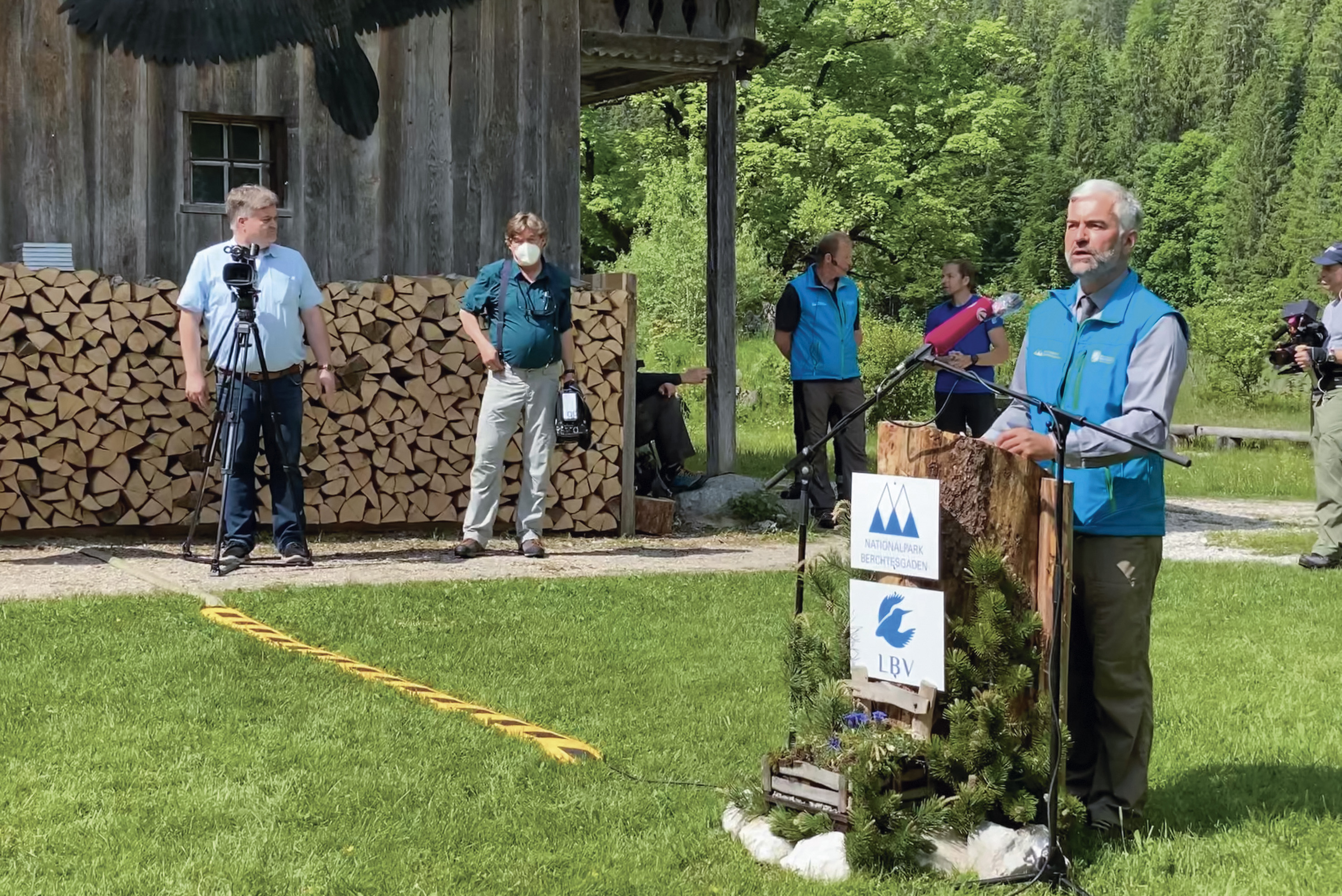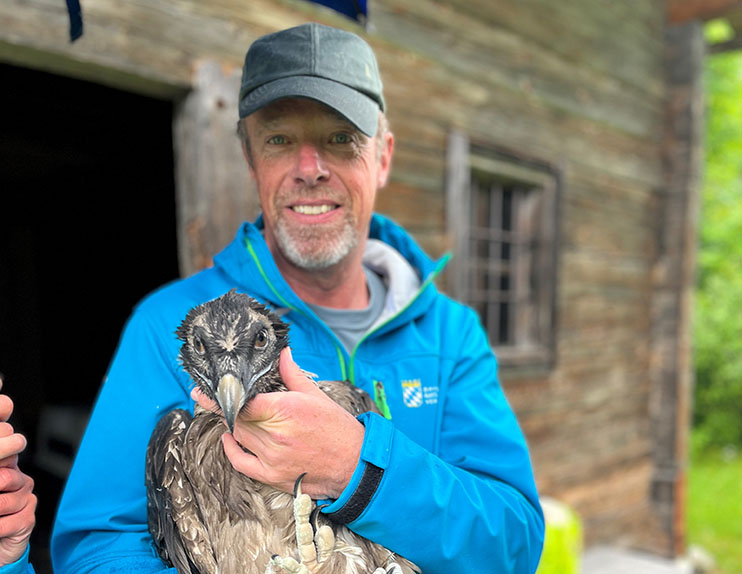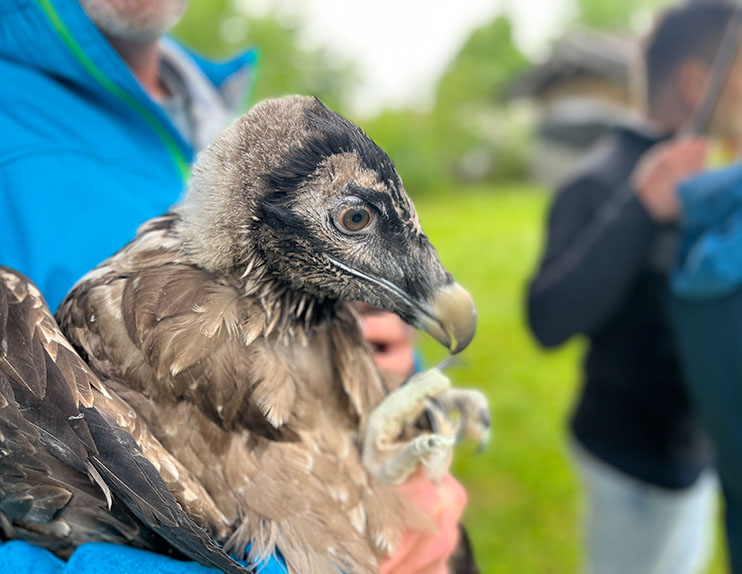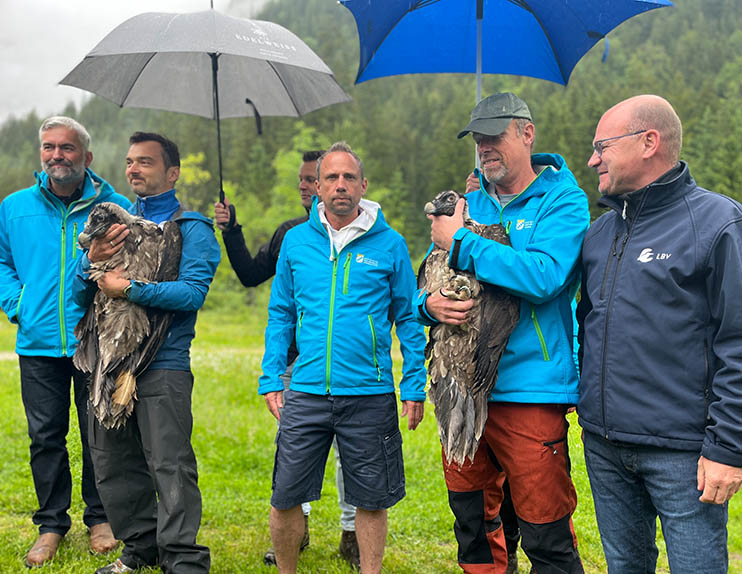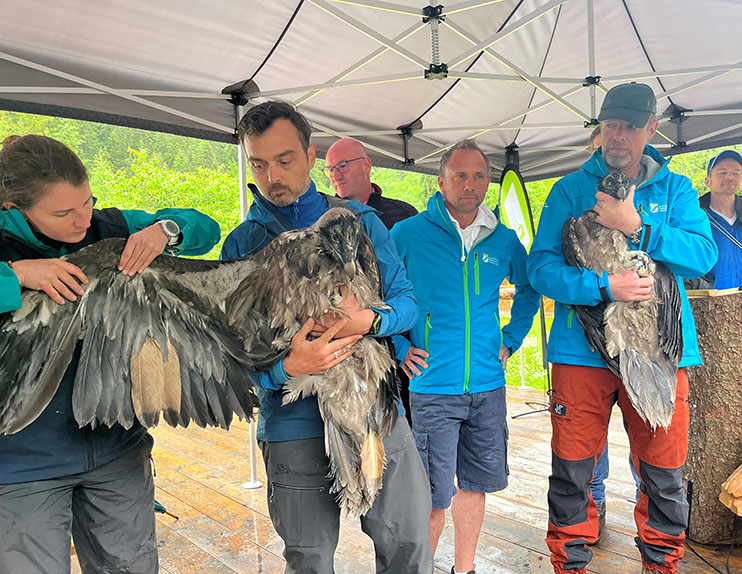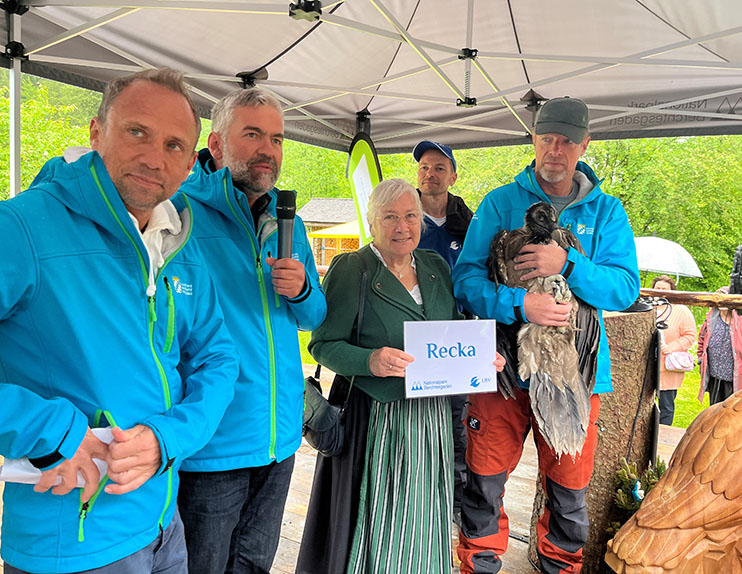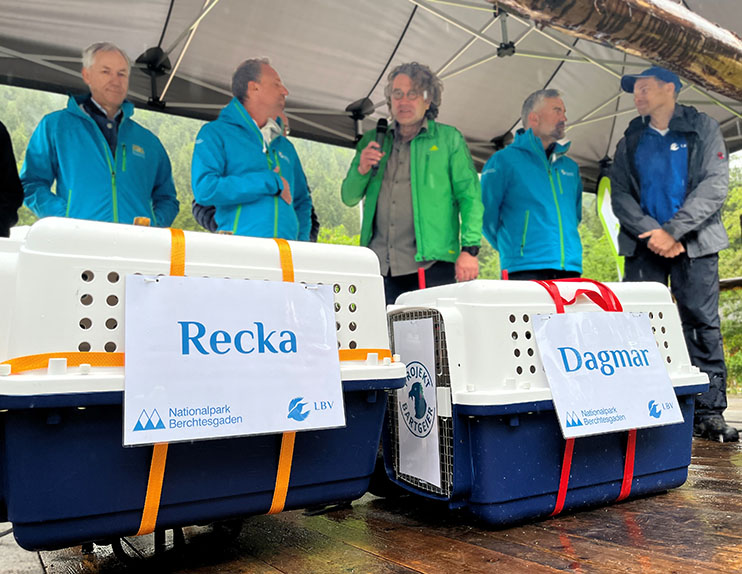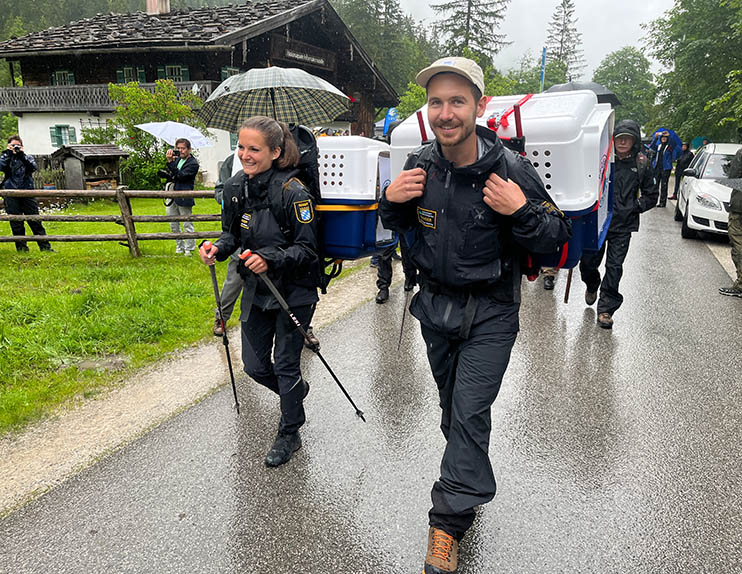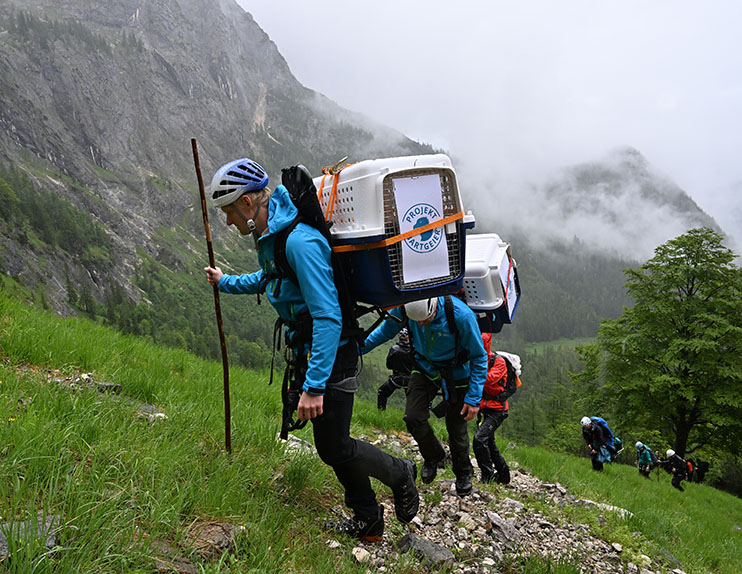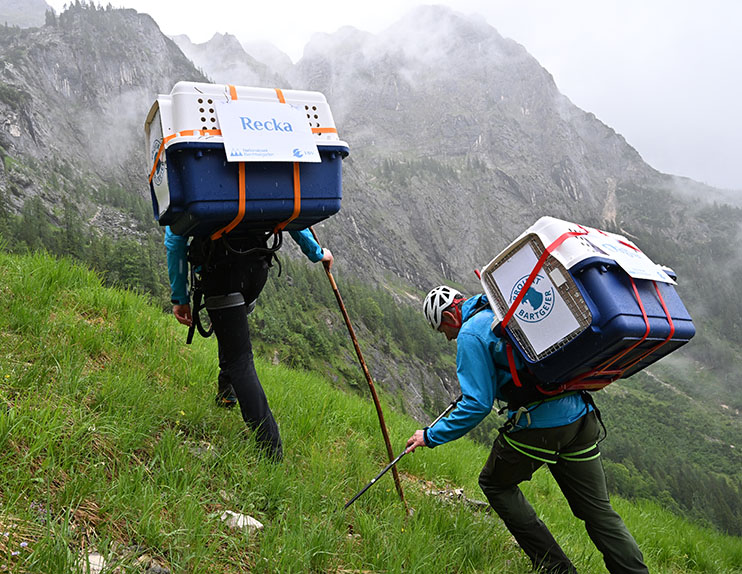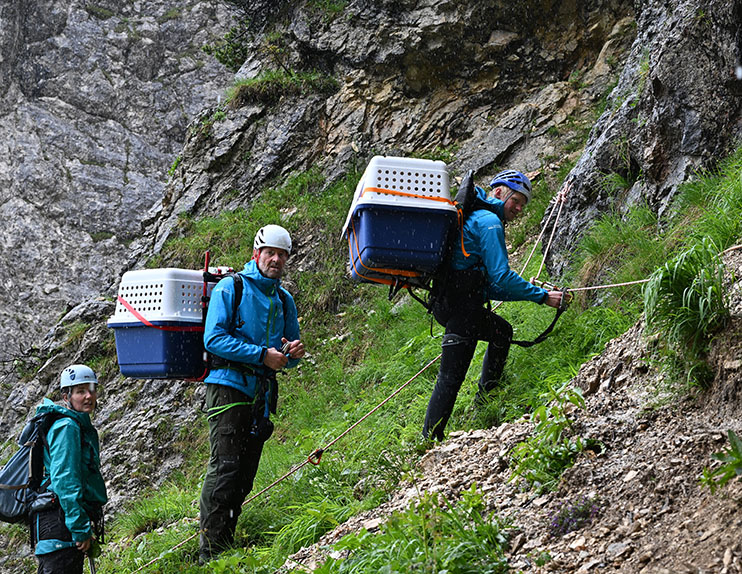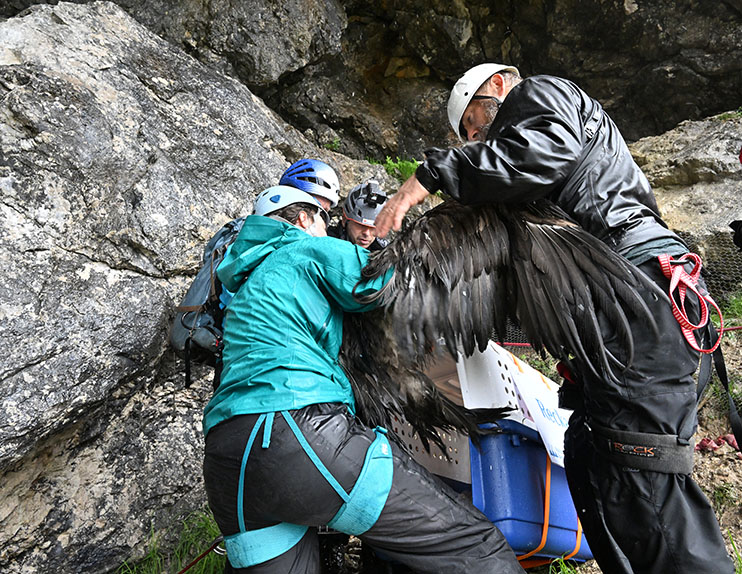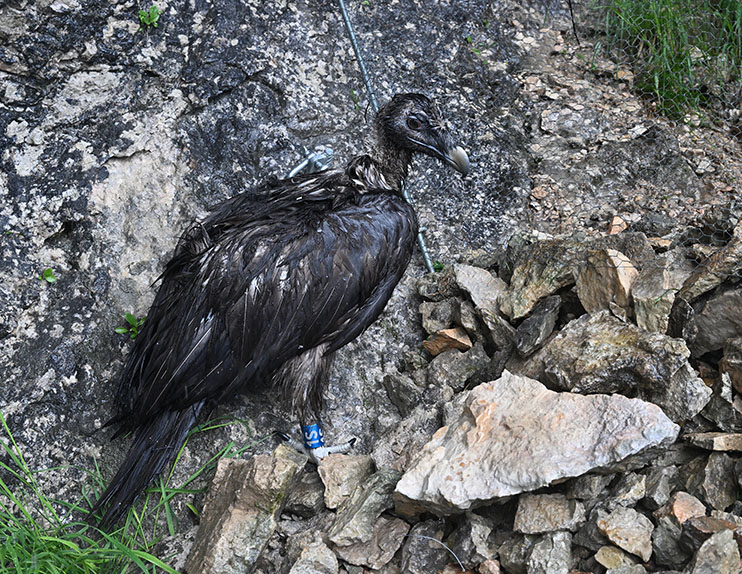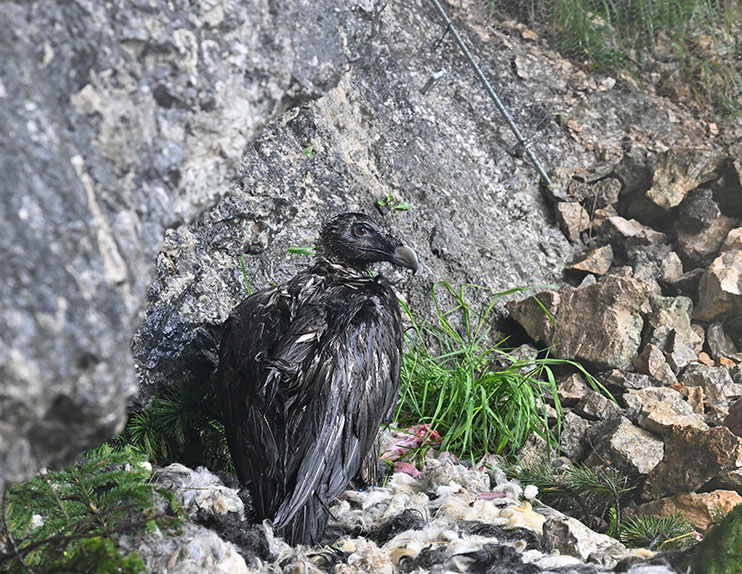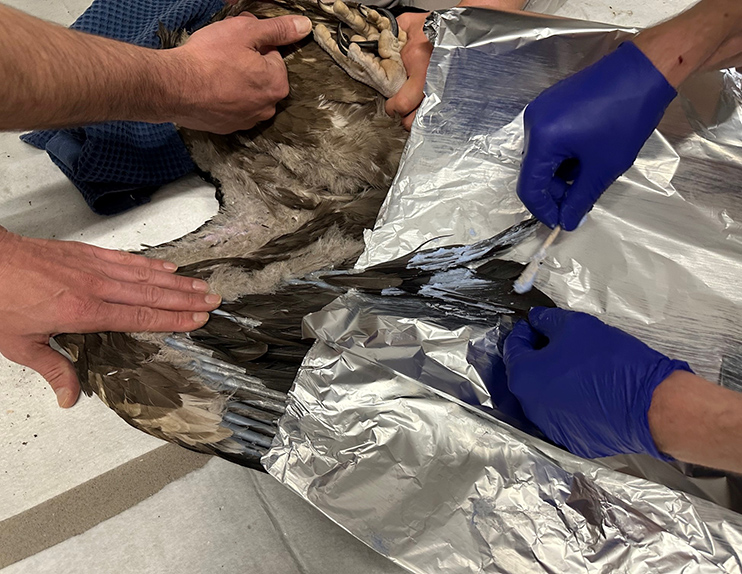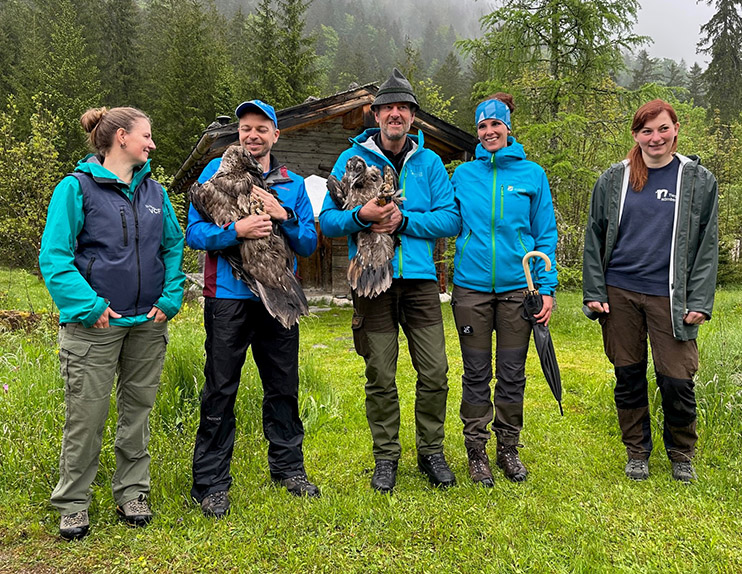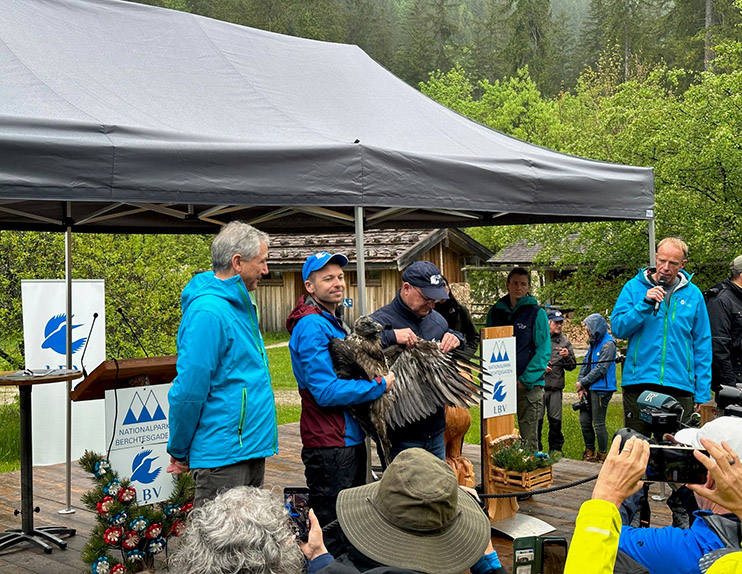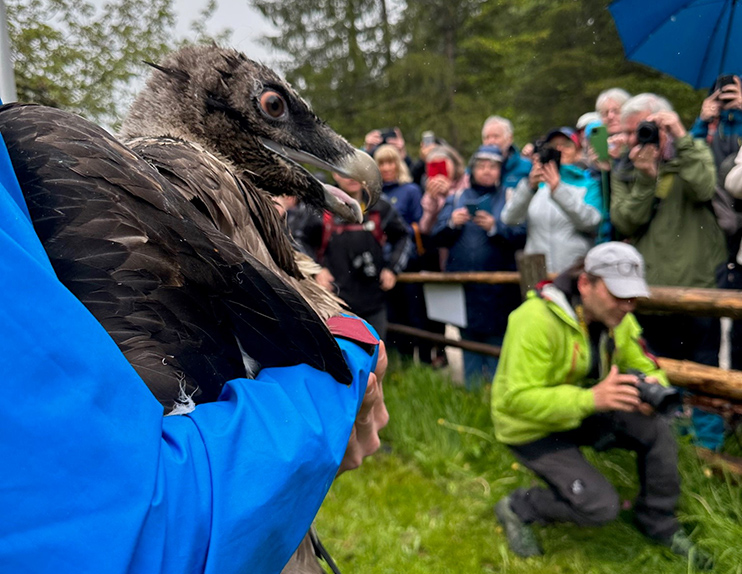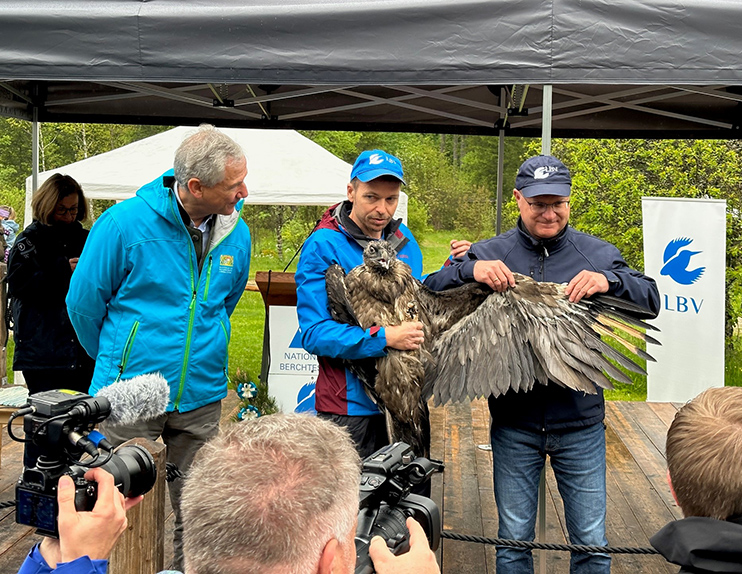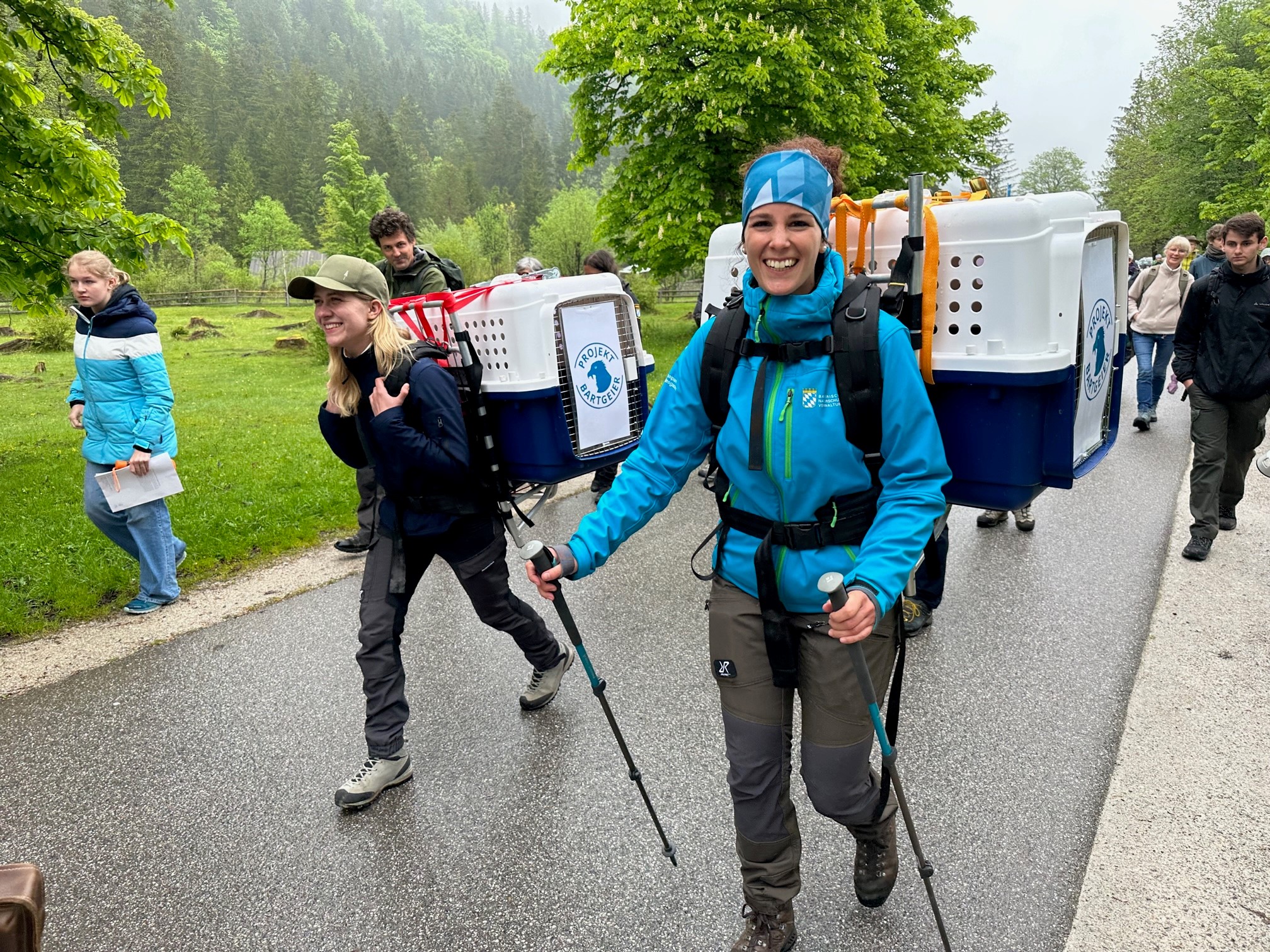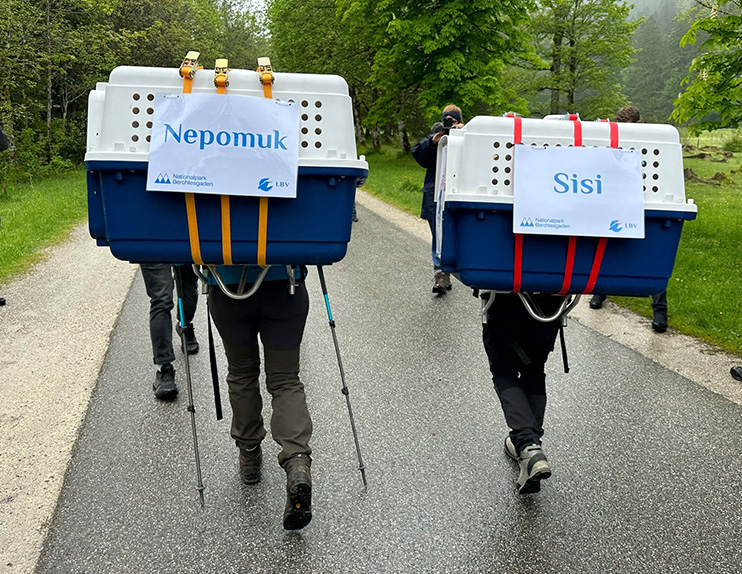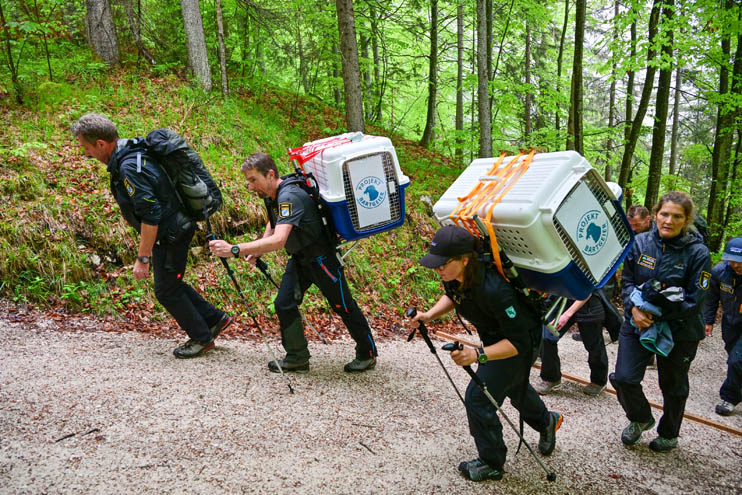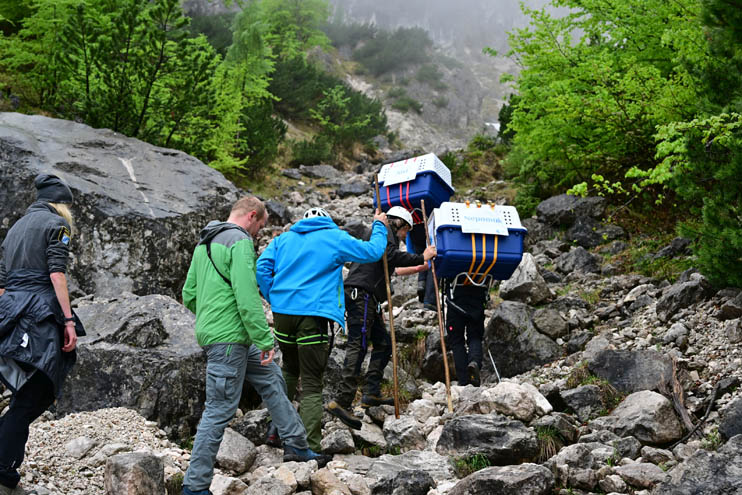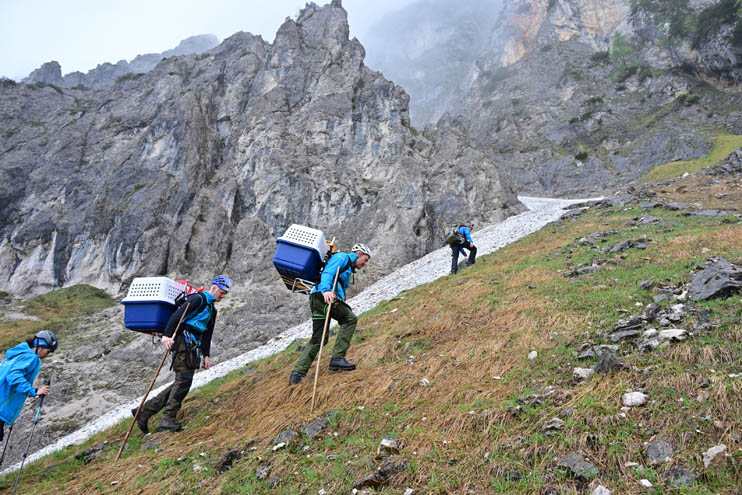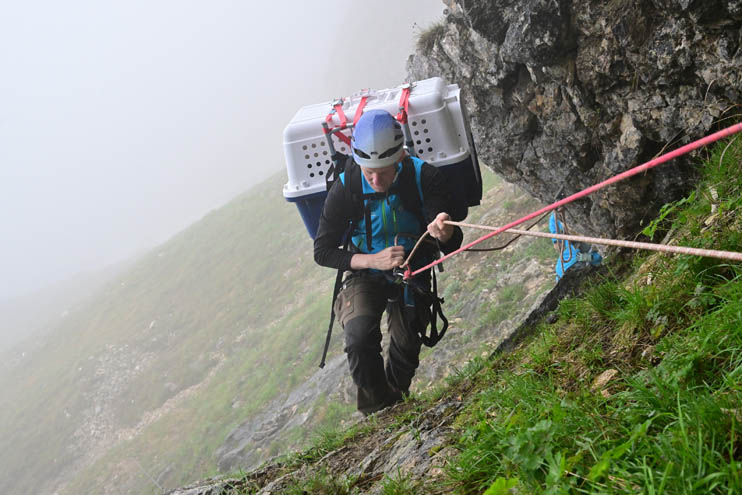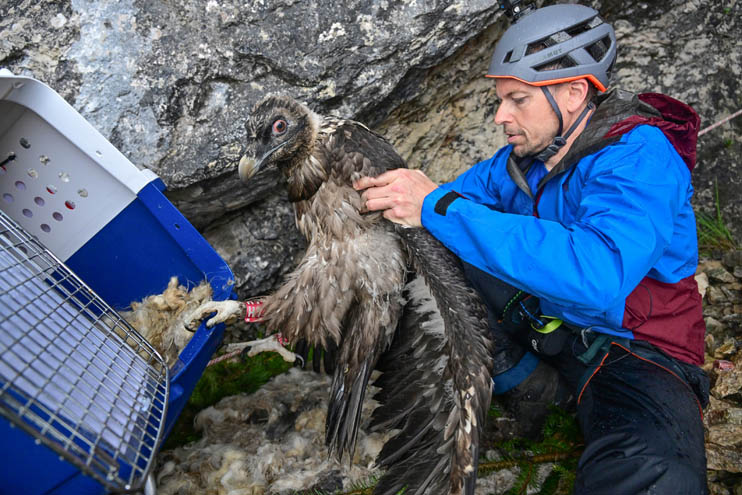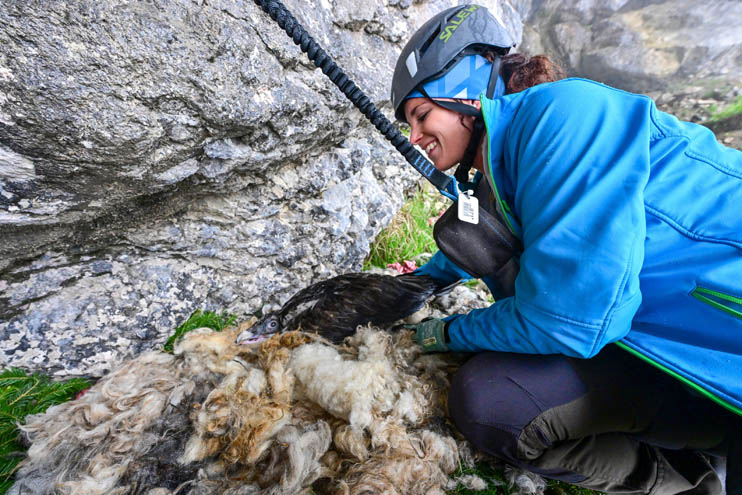Media library of our bearded vultures
-
Who is who? How can you tell the two young vultures apart?
Both are absolutely clearly recognizable only by the rings and the bleached feathers. However, these are usually difficult to see via the camera. The following features can be distinguished quite well with a little practice: Bavaria is the larger, with the higher proportion of whitish plumage coloration in the back of the head and neck. In terms of behavior, Bavaria also proved to be more dominant than Wally.
-
Is there a difference between male and female bearded vultures?
Unlike many other raptor species, the size difference between females and males is minimal. Females tend to be slightly larger and heavier, but this is not visible to the naked eye at the individual level. Appearance is otherwise the same. Sex can be easily determined with genetic testing.
-
Why were two females abandoned?
The outwardly indistinguishable sexes of the two birds are only determined shortly before release by genetic testing via blood sampling. In principle, it is also not a matter of releasing a pair. Bearded vultures are not sexually mature until they are about 6 years old, and reproductive success does not occur until they are 8 to 9 years old on average. In addition, bearded vultures are very choosy when it comes to choosing a mate, which can hardly be "forced".
It is important for the project to release as many young bearded vultures as possible, which may develop a strong bond with their new home (see Philopatry, item 10).
More critical is the selection of appropriate genetic lines to influence the variability of potential establishment in the project area.
-
In the wild, only one young survives at a time. Why are 2-3 young birds always released together in the reintroduction project?
The extremely well-established, so-called "modified hacking method" that the protocol of reintroductions has followed for decades dictates that at least two fledglings must always be released together. This acts as a social function and is intended to buffer the sudden separation from the parents.
-
With emerging conflicts between young bearded vultures, could it be dangerous for an underperforming young bird?
Due to the optimal food supply and the (almost) same age and thus similar developmental state, the most serious competitive factors are minimized. Nevertheless, dominance behavior usually develops, conflicts are fought out and they often try to oust the other young bird. As a rule, however, nothing bad happens, the niche is large enough to avoid each other and there is plenty of food for all.
Due to the constant observation, one would also have the possibility to intervene. However, this only happens extremely rarely.
Experience shows: The development of young birds released according to this method later takes a completely normal course.
-
What else is typical of the `hacking' method?
The young birds, which are not yet fully fledged, are released at the age of approx. 90 days into a well-protected rock niche at carefully selected locations in the Alps. Overall, the process of natural fledging is imitated and with great success. The main functions of the parents (protection, food) are taken over by humans, but without direct contact. The young birds are guarded around the clock and fed as needed, usually every 2-3 days.
-
What are the young birds fed with?
Mainly bone pieces and runs from cloven-hoofed game species: roe deer, chamois, red deer. It should contain at least 20% meat content, since the young birds can not yet digest pure bone food so well and are dependent on the water content in the meat. We have cooperations with hunters of the BaySF and the national park. They collect parts for us that they would otherwise only dispose of.
-
When can we expect the first flight of the young birds?
At the age of 110 to 120 days, the young bearded vultures usually dare their first flight.
This time can be estimated quite well, because as in the natural process, the fledged young birds usually remain in the vicinity of the eyrie after fledging. A bond develops with the eyrie environment and this often leads to so-called philopatry.
-
What does philopatry mean and what effect does it have on the reintroduction project?
Philopatry literally means "love of home". Here, in a figurative sense, it means the return to the place of birth or, in our case, to the imprinted place of release. During the nesting and fledging period, the learning ability is at its highest. Therefore, the young birds form a bond with the place of release, which continues even after the migratory years.
After several years of migration, clusters of returning Bearded Vultures may develop around the release site. Ideally, some of the returnees will then form a pair bond.
-
How many bearded vultures are released in Berchtesgaden?
Due to the long time it takes for bearded vultures to successfully produce offspring, a reintroduction project only makes sense in the long term. A project duration of 10 years is planned, during which about 2-3 young birds will be released per year.
-
How do the young birds cope after release, since they no longer receive support from their parents?
It is really amazing how well the young bearded vultures find their way around in places that were totally unknown to them before, based on their innate behaviors and great adaptability alone.
They practice eating larger pieces of bone, train flight muscles, and in time become agile and skilled fliers. Even the technique of crushing bones by dropping them from a great height onto suitable rocky surfaces ("bone smithing") is innate in broad strokes. Admittedly, it must first be trained and perfected over a long period of time.
Press releases - only in german
| Date | Press release title |
|---|---|
| 11.07.2022 | Bearded vulture Recka also successfully flown out |
| 02.07.2022 | Dagmar flown out first |
| 10.06.2022 | FAQs - On the death of bearded vulture cub "Wally" |
| 09.06.2022 | More vultures for Bavaria: "Recka" and "Dagmar" successfully released into the wild |
| 30.05.2022 | Missing bearded vulture Wally is dead |
| 08.04.2022 | Viva Familia! - Reinforcement for Wally and Bavaria |
| 22.02.2022 | Nuremberg bearded vulture female has laid two eggs |
| 21.01.2022 | Signs of life from Bavaria after two months of radio silence |
| 13.01.2022 | Hope for bearded vulture offspring from Nuremberg |
| 08.07.2021 | Bearded vulture lady "Bavaria" has flown out |
| 10.06.2021 | "Bavaria" and "Wally" successfully released into the wild |
General image material
Note: Please give credit to the image author indicated in the file name. Use the image material only for reporting on the bearded vulture project. The images may not be used in archives. Passing on to third parties is not permitted.
Image material in general
Note: Please give credit to the image author indicated in the file name. Use the image material only for reporting on the Bearded Vulture Project. The imageers may not be used in archives. Passing on to third parties is not permitted.
Image material in general
Note: Please give credit to the image author indicated in the file name. Use the image material only for reporting on the Bearded Vulture Project. The imageers may not be used in archives. Passing on to third parties is not permitted.
